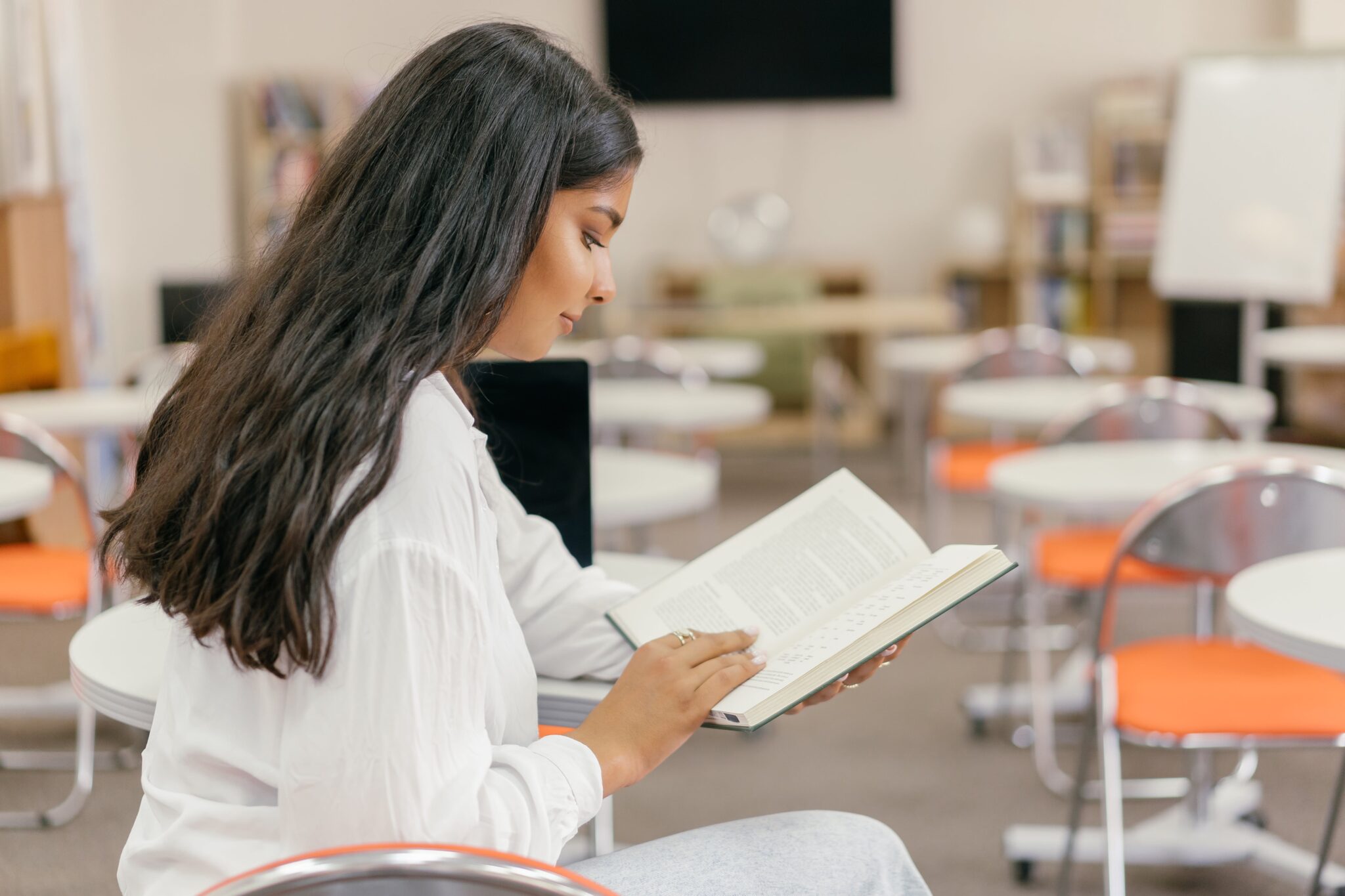Key Teaching Strategies Explained
Active Learning
Active learning involves engaging students in the learning process through activities like discussions, group work, and hands-on experiences. It promotes critical thinking and retention of information.
Implementing active learning strategies allows students to apply concepts in real-world scenarios, fostering a deeper understanding of the material. Educators create an immersive learning environment that enhances student engagement by encouraging participation and interaction.
Differentiated Instruction
Differentiated instruction tailors teaching methods to accommodate diverse learning styles and abilities within a single classroom by the teacher. It involves adjusting content, process, and product to meet individual student needs and varied learning styles.
By recognizing that students learn differently, educators can provide various avenues for learning, ensuring that all students have the opportunity to succeed. This approach promotes inclusivity and personalized learning experiences.
Cooperative Learning
Cooperative learning fosters collaboration among students by working together in groups to achieve common goals. It encourages communication, teamwork, and shared responsibility among peers.
Students develop essential social skills such as leadership, communication, and conflict resolution through cooperative learning activities. By working collectively towards a shared objective, students enhance their problem-solving abilities and build strong relationships with their peers.
Benefits of Teaching Strategies
Improved Student Engagement
Teaching strategies enhance student engagement by making lessons interactive and relevant. Students are more likely to participate actively in class discussions and activities.
PPersonalizedLearning ExperienceEducators can cater to different learning styles and paces. This leads to a customized learning experience for each student.
Enhanced Knowledge Retention
Implementing teaching strategies such as hands-on activities and visual aids can improve knowledge retention among students. Active participation boosts memory retention.
Development of Critical Thinking Skills
Teaching strategies like problem-based learning and debates promote critical thinking skills. Students learn to analyse information, think critically, and make informed decisions.
Fostering Collaboration Among Students
Through group projects and peer teaching, teaching strategies encourage collaboration among students. Collaborative learning enhances communication skills and teamwork abilities.
Classroom Applications of Strategies
Interactive Learning
Interactive learning is a teaching strategy where students actively participate in the learning process. Teachers can use group discussions and peer teaching to foster student engagement and collaboration. This strategy enhances critical thinking and communication skills.
Using interactive learning in the classroom allows students to explore concepts through hands-on activities, promoting a deeper understanding of the subject matter. It also encourages active participation, leading to better retention of information.
Differentiated Instruction
Differentiated instruction involves tailoring teaching methods to accommodate diverse learning styles and abilities. By inindividualizingnstruction, teachers can meet the unique needs of each student. This strategy promotes inclusivity and personalised learning experiences.
Implementing differentiated instruction enables teachers to provide customised student support based on their strengths and weaknesses. It fosters a positive learning environment where every student feels valued and supported.
Technology Integration
Technology integration involves incorporating digital tools and resources into the teaching process. Teachers can use educational apps and online platforms to enhance student engagement and facilitate interactive learning experiences. This strategy prepares students for the digital age and develops their technological literacy.
Integrating technology in the classroom enables students to access various resources and information, fostering self-directed learning. It also allows for real-time feedback and collaboration, enhancing the learning experience.
Effective Use of Teaching Methods
Active Learning
Active learning involves engaging students in the learning process through activities like group discussions, problem-solving tasks, and hands-on experiments. This method enhances students’ critical thinking skills and promotes better retention of information.
Differentiated Instruction
Differentiated instruction tailors teaching to individual student needs by varying content, process, and product based on students’ readiness, interests, and learning profiles. It helps address diverse learning styles within a classroom.
Cooperative Learning
Cooperative learning encourages students to work in small groups to achieve common goals. This method fosters teamwork, communication skills, and peer-to-peer learning. It also boosts students’ social skills and collaboration abilities.
Inquiry-Based Learning
Inquiry-based learning involves posing questions, problems, or scenarios to students to encourage critical thinking, problem-solving, and exploration. Students actively investigate topics, leading to a deeper understanding of concepts and improved analytical skills.
Flipped Classroom
In a flipped classroom, traditional teaching methods are reversed. Students learn new content at home through videos or readings and then engage in class activities, discussions, or projects. This approach allows for more interactive and personalized experiences.
Inquiry-Based Learning Approaches
Student-Centred
Inquiry-based learning puts students at the centre, encouraging them to ask questions, investigate, and solve problems. Students take charge of their knowledge, fostering curiosity and critical thinking skills.
Real-World Connections
This approach links classroom content to real-life situations, making learning more relevant and engaging. Students see the practical applications of what they are studying.
Collaborative Learning
Collaboration is critical in inquiry-based learning. Students work together, sharing ideas, perspectives, and solutions. This fosters teamwork and communication skills.
Problem-Solving Skills
Through inquiry-based learning, students develop critical problem-solving skills. They learn to analyze analyzation, think creatively, and find solutions independently.
Active Participation
Inquiry-based learning promotes active participation. Students engage in hands-on activities, experiments, and discussions. This active involvement enhances their understanding of the subject matter.
Differentiated Instruction Techniques
IndividuIndividualizedg
Individualized is a teaching strategy that tailors instruction to meet the unique needs of each student. Teachers assess students’ strengths and weaknesses to create personal personalized plans. This approach fosters personal personalisation and enhances student engagement.
Flexible Grouping
Flexible grouping involves organisation based on abilities, interests, or learning styles for specific activities. It allows educators to provide targeted instruction and support to diverse learners within the classroom. This technique promotes collaboration and peer learning among students.
Varied Assessments
Utilizing assessments enables teachers to evaluate students’ understanding through multiple methods such as quizzes, projects, presentations, and discussions. This approach provides a comprehensive view of students’ comprehension levels and helps adjust instructional strategies accordingly.
Scaffolded Instruction
Scaffolded instruction breaks down complex tasks into smaller, more manageable steps to support students’ learning progress. It assists learners in gradually acquiring skills and knowledge by building upon their existing competencies. This method promotes skill development and boosts confidence in students.
Gamification in Education
Benefits
Engages students: Gamification Educationion makes learning more interactive and engaging for students of all ages. It can enhance motivation and encourage active participation.
Enhances learning: Students are motivated to learn and retain information better by incorporating game elements like rewards and challenges. It promotes a deeper understanding of concepts.
Challenges
Implementation complexity: Integrating gamification into the curriculum requires careful planning and execution. Educators need to design activities that align with learning objectives.
Overemphasis on rewards: While rewards can be motivating, an over-reliance on them may lead to extrinsic motivation overshadowing intrinsic learning goals.
Incorporating gamification into teaching strategies can significantly impact student engagement and learning outcomes. It offers a dynamic approach Educationion by leveraging elements of games to create an immersive learning experience. By integrating game-like features such as points, levels, and challenges into lessons, educators can transform traditional teaching methods into interactive and enjoyable experiences for students.
Gamification encourages collaboration, critical thinking, and problem-solving skills as students navigate through tasks and challenges. It fosters a sense of accomplishment and progress, motivating learners to participate actively in their educational journey. Overall, gamification can potentially to revolutirevolutionize educationlivered and received in modern classrooms.
Project-Based Learning Overview
Benefits
Enhances critical thinking: Project-based learning encourages students to think critically by solving real-world problems through hands-on projects.
Promotes collaboration: Students work in groups, fostering collaboration and communication skills essential for future success.
Increases engagement: Students are more engaged in the learning process by working on projects that interest them.
Implementation
To implement project-based learning effectively, teachers should:
- Define clear goals: Establish specific objectives for each project to guide students throughout the process.
- Provide support: Offer guidance and resources to help students navigate challenges and succeed in their projects.
- Encourage creativity: Allow students to explore solutions and creatively express their ideas.
Project-based learning can be integrated into various subjects, such as science, math, and history, making it a versatile teaching strategy suitable for diverse classrooms.
Examples
In a science class, students could conduct experiments to explore environmental issues like pollution or climate change.
In a history class, students might create presentations or documentaries about significant historical events or figures.
Cooperative Learning Strategies
Group Work
Group work is a common cooperative learning strategy where students collaborate on tasks or projects. It fosters teamwork and communication skills among students, promoting a sense of shared responsibility.
Think-Pair-Share
Think-Pair-Share encourages active participation by having students think individually about a topic, discuss it with a partner, and then share their ideas with the class. It enhances critical thinking and verbal communication skills.
Jigsaw Technique
The Jigsaw technique divides students into groups to become “experts” on different topics before sharing their knowledge with their original group. This strategy promotes collaboration and ensures everyone contributes to the group’s success.
Peer Tutoring
In peer tutoring, students act as both the tutor and the tutee, helping each other understand concepts. This approach enhances understanding through explanation and reinforces learning through teaching.
Role Playing
Role-playing involves assigning students specific roles to act out scenarios related to the lesson. It encourages empathy and allows students to see issues from different perspectives.
Graphic Organizers for LearOrganizersl Representation
Graphic organizers are tool organizers that help students visually represent information. They include diagrams, charts, and maps.
Students can use graphic organizers to organise ideas. These tools enhance comprehension and retention of information.
Types of Graphic Organizers
- Mind mapOrganizersnt concepts and relationships visually.
- Venn diagrams: Compare and contrast information.
- Flowcharts: Illustrate processes or sequences of events.
Benefits of Using Graphic Organizers
- We are facilitating organisation by breaking down information into manageable chunks.
- Enhance critical thinking skills by encouraging students to analyze relationshianalyzeeen concepts.
Implementing Graphic Organizers
TeachersOrganizersduce graphic organizers during organizers summarize key point summaries and can also create their organizers to revieorganizersion independently.
Application in Various Subjects
In science classes, graphic organizers can help organisers visualise scientifivisualizees. In language arts, they aid in organizing story organizing writing assignments.
Flexible Classroom Seating Options
Benefits
Encourages collaboration: Flexible seating allows students to work in groups efficiently, promoting teamwork and communication skills. Enhances comfort: Students can choose where to sit based on their preferences, leading to improved focus and engagement. Supports different learning styles: Varied seating options cater to visual, auditory, and kinesthetic learners.
Implementation
For diverse seating choices, consider incorporating bean bags, standing desks, floor cushions, or wobble stools. Create designated areas for group work, independent study, and quiet reflection to maximize the beneficial and accessible seating.
Summative and Formative Assessments
Types of Assessments
Summative assessments are typically administered at the end of a learning period to evaluate students’ overall understanding. These assessments include final exams, standardized tests, and standardizedcant projects. On the other hand, formative assessments occur during the learning process to provide ongoing feedback on students’ progress. Examples of formative assessments include quizzes, group discussions, and homework assignments.
Benefits of Summative Assessments
- Provides a comprehensive evaluation of students’ knowledge and skills.
- It helps identify areas where students may need additional support.
- Offers a clear benchmark for measuring academic achievement.
Drawbacks of Formative Assessments
- They can create stress and anxiety due to their high-stakes nature.
- It may not always capture a student’s proper understanding or abilities accurately.
Incorporating summative and formative assessments is crucial. By combining these assessment types, educators can gain a holistic view of student’s progress and tailor their teaching methods accordingly.
Experiential Learning Methods
Active Participation
Active participation is a crucial aspect of experiential learning methods. Students engage in hands-on activities, experiments, and real-world simulations to deepen their understanding. This approach fosters critical thinking and problem-solving skills.
Collaborative Projects
Encouraging collaborative projects among students is another effective strategy. Students learn how to communicate effectively, delegate tasks, and respect diverse perspectives by working together on assignments, presentations, or research projects. Collaboration enhances teamwork skills and promotes a sense of community within the classroom.
Field Trips
Field trips are a popular experiential learning method that allows students to explore outside the classroom. These trips provide practical exposure to various subjects, such as science museums, historical sites, or nature reserves. Field trips make learning more engaging and memorable by connecting theoretical knowledge to real-world experiences.
Role-Playing Activities
Role-playing activities immerse students in scenarios where they take on specific roles or characters. This method helps students develop empathy, communication skills, and the ability to see issues from multiple perspectives. Role-playing fosters creativity and enhances social-emotional learning.
Culturally Responsive Teaching Practices
Inclusive Environment
Creating an inclusive environment in the classroom is crucial for culturally responsive teaching. This involves embracing diversity and acknowledging students’ backgrounds.
Fostering a sense of belonging among students can enhance their learning experience. Educators can create a supportive and inclusive atmosphere by valuing each student’s unique identity.
Personalized Learning
Personalized learning is another crucial aspect of personalised practices. It involves tailoring instruction to meet the diverse needs and preferences of students.
Educators can make learning more engaging and relevant by incorporating students’ interests and experiences into lessons. This approach helps promote student motivation and academic success.
Multicultural Curriculum
Developing a multicultural curriculum is essential for culturally responsive teaching. Integrating diverse perspectives, histories, and contributions into the educational material.
A multicultural curriculum helps students see themselves reflected in the content, promoting a sense of belonging and cultural pride. It also challenges stereotypes and encourages critical thinking.
Blended Learning Concepts
Flexibility
Blended learning combines online and in-person instruction, offering flexibility in students’ engagement with course materials. This allows students to learn independently and review content as needed.
Personalization
One key aspect of blended learning is the ability to personalize instruction. Personalizationers can tailor lessons to meet student needs and provide personalized support where necessary. This customised approach enhances student engagement and promotes better learning outcomes.
Technopersonalizedtion
Blended learning incorporates various technologies, such as learning management systems and educational apps, to enhance the learning experience. Students develop digital literacy skills essential for the modern world by integrating technology into the curriculum.
Collaboration Opportunities
Blended learning creates opportunities for collaboration among students through online discussions, group projects, and virtual teamwork. Collaborative activities foster communication skills and encourage peer-to-peer learning.
Data-Driven Instruction
Blended learning allows educators to collect data on student progress, enabling them to adjust instruction based on real-time feedback. By analyzing data, teachers can identify areas where students need additional support or enrichmentanalyzingness Educationion.
Benefits
Improved focus and attention: Mindfulness practices help students enhance their concentration levels, leading to better academic performance.
Reduced stress and anxiety: Implementing mindfulness techniques and education can significantly decrease stress and anxiety levels among students.
Implementation
Mindfulness Education integrates deep breathing exercises, guided meditation sessions, and mindful listening activities into the daily routine.
Engaging students in short mindfulness exercises at the beginning of classes or during transitions can set a positive tone for the learning environment.
Examples
- Breathing exercises: Encouraging students to take deep breaths can help them calm down and refocus during challenging situations.
- Guided meditation: Leading students through short meditation sessions can promote relaxation and mental clarity.
Considerations
Individual preferences: It’s essential to recognize that not all students may respond the same way to mindfulness practices. Educators should offer a variety of techniques to cater to diverse preferences.
Consistency: To reap the full benefits of mindfulness Educationion, consistency in practice is critical. Regular incorporation of mindfulness activities can lead to long-term positive outcomes for students.
Student-Centered Inquiry Approaches
Active Learning
Active learning engages students in the learning process through activities like discussions, group work, and hands-on experiences. This strategy fosters critical thinking and problem-solving skills.
Encouraging collaboration among students allows them to learn from each other’s perspectives. This approach promotes teamwork and communication skills essential for real-world scenarios.
Differentiated Instruction
Differentiated instruction tailors teaching methods to accommodate diverse learning styles and abilities within a classroom. It ensures that every student receives personalized support to maximize their learning potential.
Providing individualized tasks based on student personalized and weaknesmaximizecators can address each student’s unique individual. This approach enhances student engagement and motivation in the learning process.
Project-Based Learning
Project-based learning immerses students in real-world projects that require critical thinking, problem-solving, and creativity. It enables students to apply theoretical knowledge to practical situations. Students develop essential skills such as research, collaboration, and presentation abilities. This method enhances students’ understanding of complex concepts by applying them to tangible projects.
Socratic Questioning Techniques
Active Participation
Encouraging students to participate in discussions actively fosters critical thinking and enhances their analytical skills. By posing open-ended questions, educators can stimulate engagement and deeper understanding.
Enhanced Problem-Solving
Through Socratic questioning, teachers can guide students towards uncovering solutions independently. This approach promotes self-reliance and boosts problem-solving capabilities.
Improved Communication
By employing Socratic questioning techniques, instructors create an environment that cultivates practical communication skills among students. This method enhances articulation and promotes more explicit expression of ideas.
Critical Thinking Development
erratic questioning aids in developing students’ critical thinking abilities by prompting them to analyze information critically. This technique encourages reflection and the evaluation of various perspectives.
Enhanced Learning Retent analyzers actively engaging in Socratic questioning sessions will likely retain information effectively. This method promotes long-term memory retention through active participation and critical analysis.
Importance of Strategy Variety
Enhanced Learning Experience
Utilizing various teaching strategies in the classroom can significantly enhance the learning experience for students. By incorporating diverse utilizing as visual aids, group discussions, and hands-on activities, educators cater to different learning styles.
Improved Engagement Levels
Implementing various teaching strategies helps to maintain students’ interest and engagement throughout the lesson. Teachers can prevent monotony and boredom by switching between techniques and keeping learners actively involved in the material.
Catering to Different Learning Styles
Using a mix of teaching strategies allows instructors to cater to the diverse learning styles present in a classroom. By accommodating visual, auditory, and kinesthetic learners, educators ensure that all students have the opportunity to grasp and retain information effectively.
Encouraging Critical Thinking
Integrating different teaching approaches encourages students to think critically and analytically. Through activities like debates, case studies, and problem-solving tasks, learners are challenged to apply their knowledge in practical scenarios.






